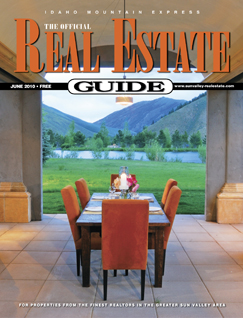| local
weather |
| front page |
| classifieds |
| calendar |
| last week |
| recreation |
| subscriptions |
| express jobs |
| about us |
| advertising info |
| sun valley guide |
| real estate guide |
| homefinder |
| sv catalogs |
|
|
| hemingway |
| Produced
& Maintained by Idaho Mountain Express, Box 1013,
Ketchum, ID 83340-1013 208.726.8065 Voice 208.726.2329 Fax |
| Copyright
© 2002 Express Publishing Inc. All Rights reserved. Reproduction in whole or in part in any form or medium without express written permission of Express Publishing Inc. is prohibited. |

For the week of July 10 - 16, 2002
![]()
Wildland fires have people anxious to help
Guest opinion by KIM BUXTON
Kim Buxton is a media spokesperson for the Idaho Bureau of Land Management
Fire conditions throughout the West remain extreme. As news reports continue to pepper us with images of wildland fire burning out of control, federal land management agencies, like the Bureau of Land Management, continue to receive calls from private citizens who would like to offer their help as firefighters.
While these offers are greatly appreciated, it is important for people to understand that individuals must be trained and "red-carded" before they are qualified to work as wildland firefighters. It is a dangerous job and not one in which a person can just grab a shovel and simply walk onto a fire line.
If you are interested in becoming a wildland firefighter, you must be between 18 and 37 years old and pass a medical examination, physical fitness test and a drug test. There are also current listings for firefighters and other available fire-related positions on BLM's website at www.blm.gov/careers/ fire.html. Interested and qualified applicants are encouraged to check this site and apply.
Severe drought throughout much of the West has launched the nation into what may be one of the most severe western wildland fire seasons in the last 50 years. While qualified firefighters continue to be a critical resource, it should be noted that BLM, other federal agencies and our state and local partners were better prepared than ever before for a challenging season. The number of firefighters, engines, air tankers, hotshot crews, smokejumpers and other fire resources has never been higher.
Although several fires have been devastating, the additional resources have made a difference. Thousands of homes have been saved by firefighters, almost 300 large fires have been controlled, and, as of June 24, about 41,000 fires were controlled during initial attack. Without the added National Fire Plan support, which the Western Governor's Association so strongly championed, the fire season could have been much worse.
Lastly, as people head out to play and/or work on their public lands this summer, remember that each of you can help in a big way. Please pay close attention to fire conditions and restrictions. It is wise to check with the local land management agency office for restrictions and closures before traveling to wildland areas. Also remember that fireworks are prohibited on all public lands, including federal and state lands.
Fire managers also remind the public that wildfires can be easily ignited in these hot, dry conditions. Anyone who has a campfire is urged to never leave it unattended and to drown it until it's cool to the touch before leaving. Without this "cool-to-the-touch" test, buried embers can retain enough heat to ignite a wildfire during a hot, breezy afternoon.
Additionally, chainsaws, ATVs and other internal combustion engines must have an approved spark arrester to be operated on public lands; and everyone visiting our public lands are reminded to not drive or park on dry grass, as exhaust systems can easily and quickly ignite a wildfire.
"We want people to enjoy their public lands, but we encourage them to do so sensibly and with consideration for the fire conditions," said William Clark, Idaho BLM State Fire Management Officer. "One careless act can put the lives of firefighters and the public at serious risk."
The Idaho Mountain Express is distributed free to residents and guests throughout the Sun Valley, Idaho resort area community. Subscribers to the Idaho Mountain Express will read these stories and others in this week's issue.

















